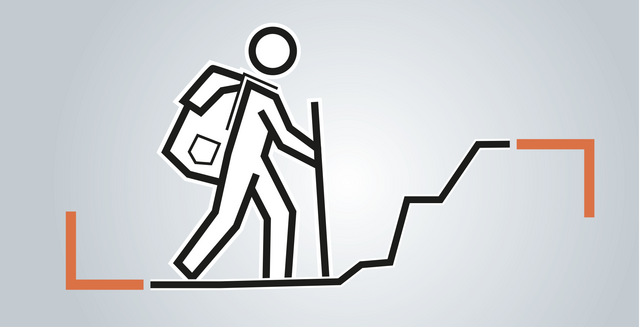
Chapitres
Founding president and liberation struggle icon Jomo KENYATTA led Kenya from independence in 1963 until his death in 1978, when Vice President Daniel MOI took power in a constitutional succession. The country was a de facto one-party state from 1969 until 1982, after which time the ruling Kenya African National Union (KANU) changed the constitution to make itself the sole legal party in Kenya. MOI acceded to internal and external pressure for political liberalization in late 1991. The ethnically fractured opposition failed to dislodge KANU from power in elections in 1992 and 1997, which were marred by violence and fraud, but were viewed as having generally reflected the will of the Kenyan people. President MOI stepped down in December 2002 following fair and peaceful elections. Mwai KIBAKI, running as the candidate of the multiethnic, united opposition group, the National Rainbow Coalition (NARC), defeated KANU candidate Uhuru KENYATTA, the son of founding president Jomo KENYATTA, and assumed the presidency following a campaign centered on an anticorruption platform.
KIBAKI's reelection in December 2007 brought charges of vote rigging from Orange Democratic Movement (ODM) candidate Raila ODINGA and unleashed two months of violence in which approximately 1,100 people died. African Union-sponsored mediation led by former UN Secretary General Kofi ANNAN in late February 2008 resulted in a power-sharing accord bringing ODINGA into the government in the restored position of prime minister. The power sharing accord included a broad reform agenda, the centerpiece of which was constitutional reform. In August 2010, Kenyans overwhelmingly adopted a new constitution in a national referendum. The new constitution introduced additional checks and balances to executive power and significant devolution of power and resources to 47 newly created counties. It also eliminated the position of prime minister following the first presidential election under the new constitution, which occurred in March 2013. Uhuru KENYATTA won the election and was sworn into office in April 2013; he began a second term in November 2017.
Source: The CIA World Factbook - Kenya
Indicateurs clés
- Surface
- 580,367 km2
- Population
- 54,685,051 (July 2021 est.)
- Type de gouvernement
- presidential republic
- Langues
- English (official), Kiswahili (official), numerous indigenous languages
- PIB
- $98.843 billion (2020 est.)
- Taux de croissance
- -0.3% (2020 est.)
- HDI
- 143
- Capitale
- Nairobi
Indicateurs macroéconomiques
Kenya is the economic, financial, and transport hub of East Africa. Kenya’s real GDP growth has averaged over 5% for the last decade. Since 2014, Kenya has been ranked as a lower middle income country because its per capita GDP crossed a World Bank threshold. While Kenya has a growing entrepreneurial middle class and steady growth, its economic development has been impaired by weak governance and corruption. Although reliable numbers are hard to find, unemployment and under-employment are extremely high, and could be near 40% of the population. In 2013, the country adopted a devolved system of government with the creation of 47 counties, and is in the process of devolving state revenues and responsibilities to the counties.
Agriculture remains the backbone of the Kenyan economy, contributing one-third of GDP. About 75% of Kenya’s population of roughly 48.5 million work at least part-time in the agricultural sector, including livestock and pastoral activities. Over 75% of agricultural output is from small-scale, rain-fed farming or livestock production. Tourism also holds a significant place in Kenya’s economy. In spite of political turmoil throughout the second half of 2017, tourism was up 20%, showcasing the strength of this sector. Kenya has long been a target of terrorist activity and has struggled with instability along its northeastern borders. Some high visibility terrorist attacks during 2013-2015 (e.g., at Nairobi’s Westgate Mall and Garissa University) affected the tourism industry severely, but the sector has rebounded strongly in 2016-2017 and appears poised to continue growing.
Inadequate infrastructure continues to hamper Kenya’s efforts to improve its annual growth so that it can meaningfully address poverty and unemployment. The KENYATTA administration has been successful in courting external investment for infrastructure development. International financial institutions and donors remain important to Kenya's growth and development, but Kenya has also successfully raised capital in the global bond market issuing its first sovereign bond offering in mid-2014, with a second occurring in February 2018. The first phase of a Chinese-financed and constructed standard gauge railway connecting Mombasa and Nairobi opened in May 2017.
Underlying weaknesses were exposed in the banking sector in 2016 when the government was forced to take over three small and undercapitalized banks. In 2016, the government enacted legislation that limits interest rates banks can charge on loans and set a rate that banks must pay their depositors. This measure led to a sharp shrinkage of credit in the economy. A prolonged election cycle in 2017 hurt the economy, drained government resources, and slowed GDP growth. Drought-like conditions in parts of the country pushed 2017 inflation above 8%, but the rate had fallen to 4.5% in February 2018.
The economy, however, is well placed to resume its decade-long 5%-6% growth rate. While fiscal deficits continue to pose risks in the medium term, other economic indicators, including foreign exchange reserves, interest rates, current account deficits, remittances and FDI are positive. The credit and drought-related impediments were temporary. Now In his second term, President KENYATTA has pledged to make economic growth and development a centerpiece of his second administration, focusing on his “Big Four” initiatives of universal healthcare, food security, affordable housing, and expansion of manufacturing.
Source: The CIA World Factbook - Economic Overview
IMF Statistics:
| Subject descriptor | 2021 | 2022 | 2023 | 2024 | 2025 |
|---|---|---|---|---|---|
|
Gross domestic product, constant prices Percent change (Units) |
7.590 |
4.860 |
5.556 |
5.031 |
5.019 |
|
Gross domestic product, current prices Percent change (Billions) |
109.875 |
114.733 |
108.747 |
116.321 |
116.662 |
|
Gross domestic product per capita, current prices Percent change (Units) |
2,208.691 |
2,265.658 |
2,110.000 |
2,218.025 |
2,186.578 |
|
Inflation, average consumer prices Percent change (Units) |
6.109 |
7.648 |
7.675 |
5.118 |
5.150 |
|
Volume of imports of goods and services Percent change (Units) |
13.752 |
3.758 |
-10.384 |
7.737 |
4.733 |
|
Volume of exports of goods and services Percent change (Units) |
11.012 |
3.302 |
-4.772 |
5.390 |
9.329 |
|
Unemployment rate Percent change (Units) |
|||||
|
Current account balance Percent change (Billions) |
-5.744 |
-5.766 |
-4.317 |
-4.749 |
-4.788 |
|
Current account balance Percent change (Units) |
-5.228 |
-5.025 |
-3.970 |
-4.083 |
-4.104 |
Source: The IMF Statistics - Kenya
Le Luxembourg et le pays
Existing conventions and agreements
Non double taxation agreement
In order to promote international economic and financial relations in the interest of the Grand Duchy of Luxembourg, the Luxembourg government negotiates bilateral agreements for the avoidance of double taxation and prevent fiscal evasion with respect to Taxes on Income and on fortune with third countries.
None
Air Services agreement
None
Informations supplémentaires
Foreign Trade
The Statec Foreign Trade statistics provide information on the trade of goods - by product and by country. This information is collected respectively through the INTRASTAT declaration and on the basis of customs documents.
You can see the statistics on the website of the Statec.
Contact points in Kenya
Luxembourg is represented by Ambassade Royale des Pays-Bas à Nairobi
Competent post for consular affairs Ambassade du Royaume de Belgique à Nairobi
Source: Ministry of Foreign Affairs of Luxembourg
Country risk as defined by Office du Ducroire for Kenya
Ducroire is the only credit insurer covering open account deals in over 200 countries. A rating on a scale from 1 to 7 shows the intensity of the political risk. Category 1 comprises countries with the lowest political risk and category 7 countries with the highest. Macroeconomics experts also assess the repayment climate for all buyers in a country.
Link: Ducroire Office - Country Risk for Kenya
Other Useful Links:




